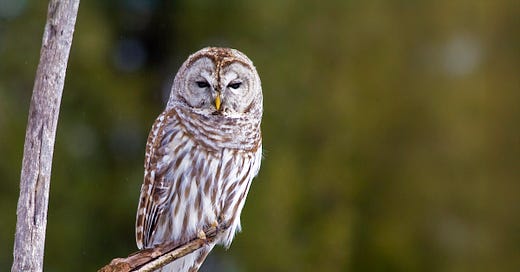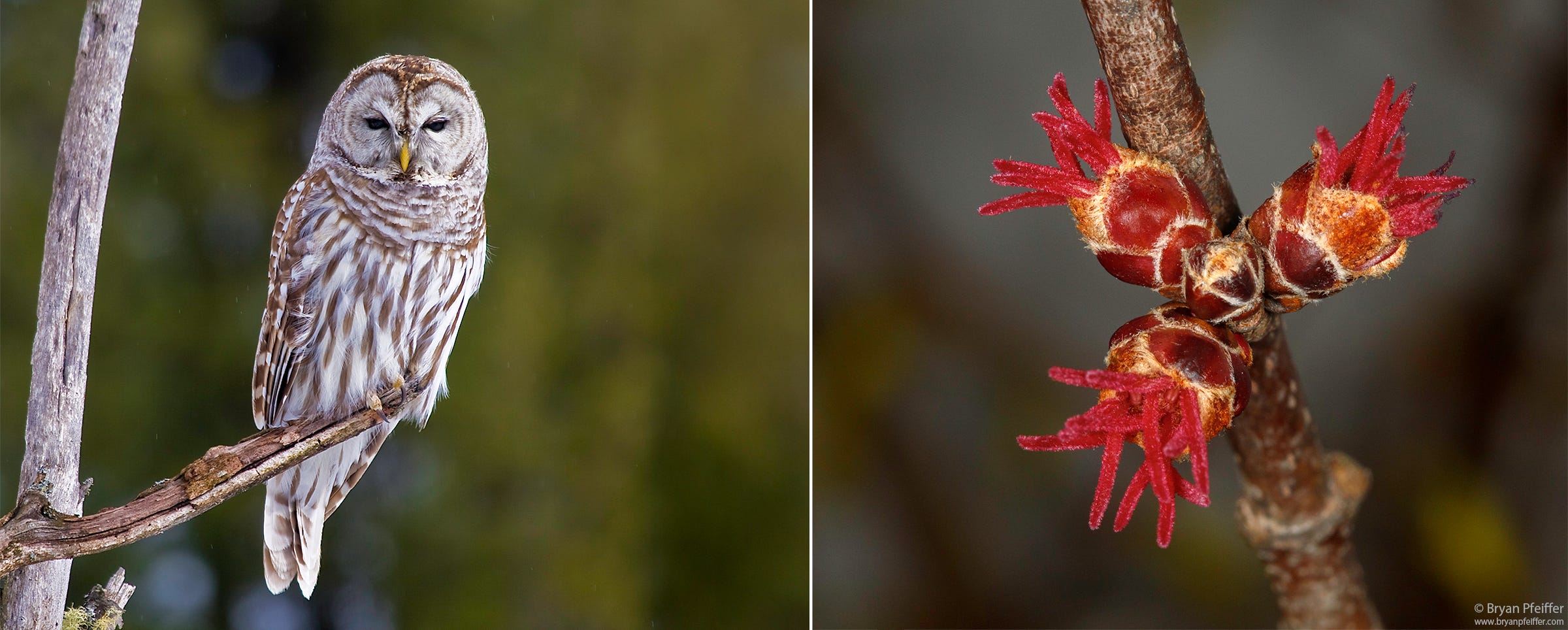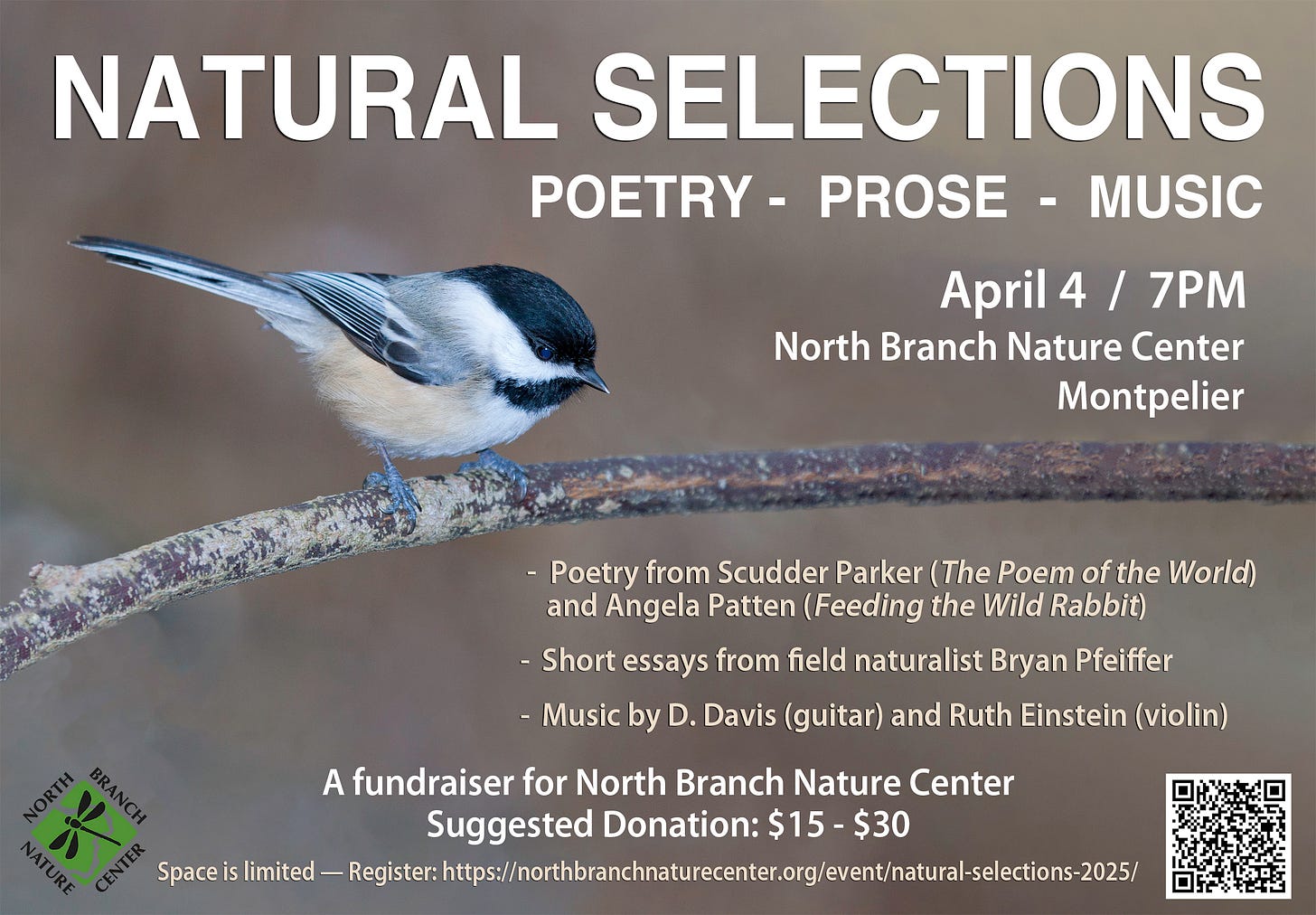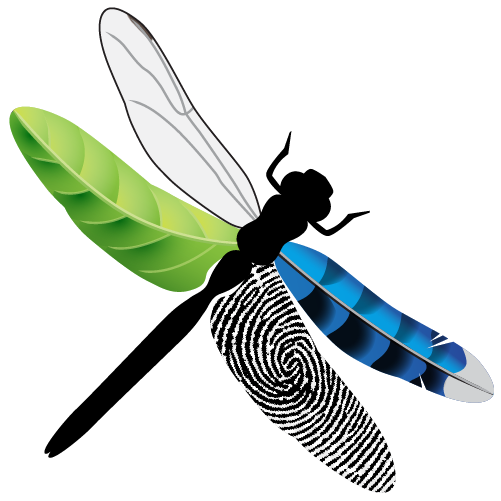IT HAPPENED sometime after the Barred Owl called out to its mate, but before the Silver Maple erupted into crimson fireworks. On that day, one of you clicked a button on your glowing screen and became Chasing Nature’s 10,000th subscriber.
Although I myself can herald this milestone with gratitude (and announcements for you below), the natural world, if it could, would probably shrug off 10,000 of anything.
More than 10,000 years ago the land where I sit, New England, had emerged, barren as tundra, from beneath a mile or two of ice during the continent’s last round of glaciation.
That lone Silver Maple tree now flowering in the yard will soon easily sprout 10,000 leaves (actually, many more).
The world has more than 10,000 species of moss; and there could be 10,000 or more nematode roundworm species yet to be described to science.
Lofty as they are, mosses and roundworms of course have nothing on you. A readership of 10,000 is indeed monumental. That you are here only strengthens my dedication to writing for you every week or so about wildlife, wild places, and the human condition.
Still, this wonderful mark has me feeling somewhat unsettled and reflective about the fate of nature — about its withering role in the human experience and in popular culture. To be sure, any fade on our part from nature warrants a longer essay from me. Until then, here’s a prelude — sort of a test run of the idea (and I welcome your opinion on it, especially pushback, in comments below).
Nature and Culture
In only a little more than two years since my launch, Chasing Nature, by one measure, has become Substack’s top-ranked publication about the overall science and joy of nature (however you might define the word). Long ago, Chasing Nature cracked the top 20 in Substack’s “Climate & Environment” category (where publications ranked higher than mine cover specifically the climate wars, weather, power generation, or some worthy niche topic). I cite my ranking not to boast, but rather to point out that pure nature writing is too often relegated to the sidelines of the noble places where people share ideas (including here on Substack).
Look around the news, for example, or among celebrity or centers of power. What major newspaper (perhaps other than The Guardian) has a genuine nature beat covering the appreciation of birds, butterflies, botany, or the general wild around us? Rare is the movie star, musician, or athlete leading the way on climate and biodiversity, or simply reminding us to slow down and rediscover our capacity for joy, rejuvenation, and wonder in the natural world.
“I’ve often had this fantasy that we should have Fox News,” the botanist and author Robin Wall Kimmerer has said, “by which I mean news about foxes.” She speaks not only of foxes, of course, but of ferns and fritillaries, orchids and oaks, owls and otters, even mosses growing from cracks in the pavement.
Instead, the culture exalts in so much artifice and elevates to power billionaires who would use up this planet and then rocket to Mars. Left in their exhaust are the voices of Kimmerer, Rachel Carson, Wendell Berry,
, , , and so many others who write or have written so eloquently and personally of the intrinsic human bond with nature. (See below for a Substack nature writing directory.)Please know that this isn’t sour grapes on my part — at least I hope not. The “Climate & Environment” category is rightfully led by
and other urgent voices (even some climate-change skeptics as well, which I suppose goes with the territory). The 20th ranked publication in Substack’s “Fashion & Beauty” category, for example, has 62,000 subscribers (so it appears I’ve got work to do). Substack maintains official categories for writers on “Business,” “Finance,” and “Crypto,” and yet “Climate & Environment” is basically the only place for scores of nature writers.Again, let me be clear: Substack has indeed elevated eco-voices, including mine — and for that I am beyond grateful (and frankly in the tank for Substack). Chasing Nature has in two years become a vital part of my intellectual and financial well-being. That you are here, and curating your own reading, means that the platform’s green voices, reflecting your voices, are loud and clear. I only wish they were louder and more widespread in the public square. Ten thousand of us can seem so small sometimes, fewer than leaves on a single maple tree.
I guess that’s why I’ll keep writing — to add my voice to a rich tradition of nature writing in so many places, as overwhelmed by zeitgeist as it seems to be becoming. My aspirations for us in nature — no matter where we find it — are simple: slow down, be curious, think, enjoy, thrive, repeat. From there, please do what you can to protect what you love on the long, green path. I pledge to write for you along the way.
So what might I call 10,000 subscribers to Chasing Nature? A damned good start. Thanks for being here.
Subscriber News
The next episode of the Chasing Nature podcast will be an “Ask Me Anything” (AMA) exclusively for paying subscribers. To be sure, feel free to ask me to identify some bird singing in woods, for example, or a dragonfly hunting in the yard. But more of us will benefit from your weighty questions about all the ways that I (and therefore you) might live closer to nature (it’s not always easy). Only paying subscribers have direct email access to me (chasingnature@substack.com). Your deadline for asking is April 10 (please put “AMA” in the subject line). If you’re a writer on Substack who subscribes, I’m happy to share strategies about writing and success on the platform (maybe that will become a separate podcast episode).
If you happen to be around Montpelier, Vermont, on April 4, here’s an invitation to meet up for music, poetry, and prose — something we’re calling Natural Selections. Among the ensemble will be my friend
, whose poetry is at .Few have done more to promote nature writing here on Substack than
and . Rebecca, who writes , is the keeper of a massive directory of nature writing called HOME. Julie, who writes , features nature writers on her NatureStack. Julie and Rebecca — they’re heroes.Finally, another way nature writers, including me, get traction on Substack is when other writers recommend us. I myself owe thanks to many writers for this kind of support, notably among them
, who writes ; , who writes ; and who write . Check them out.By the way, now that Chasing Nature has 10,000 subscribers, we’ve only got about 2.2 million more to go to catch up to
. (I’m coming for your lofty perch, Heather! Uh, well, okay, not really.)








You are an inspiration to people like me, Bryan. I’m just starting here on Substack and feel uncertain about how to gain momentum to achieve what we nature writers all aspire to: to share our love for nature, hopefully inspire it in our readers, and thus contribute to collective action on nature's behalf. It's a tall order, but we have to keep on trying. I do firmly believe that writers can have a vital role to play in showing that we belong in, and to, nature, that we are nature, and that nature is home.
Congratulations! And yes, as someone who has "written nature" for decades, we need more and better press and more attention. I'm behind your 10k subscribers, but my Practicing Terraphilia is as much spiritual inspiration as nature writing, so I'm even harder to classify. Thank you for your eloquence and your regular "fox news" look at the planet and the web of life we share Earth with. You remind us to strengthen our in-born terraphilia, our species' cell-deep connection to nature, in beautiful ways. I, for one, am grateful.